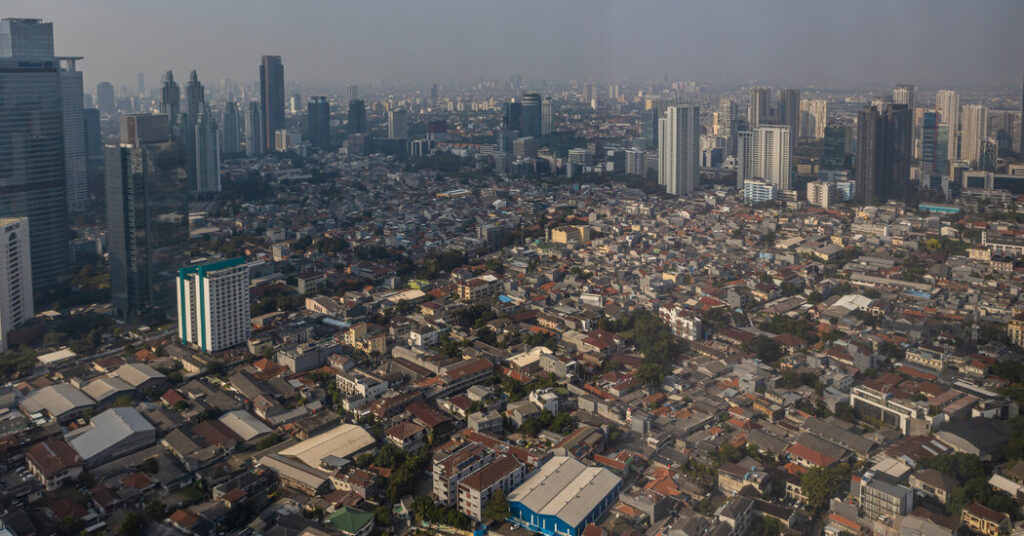Jakarta, Indonesia’s vibrant, overcrowded and sinking capital, has displaced Tokyo as the most populated city in the world, according to the United Nations, thanks to its new way of counting urban populations.
Jakarta is estimated to have 42 million inhabitants, roughly the population of Canada, according to the U.N.’s “World Urbanization Prospects 2025” report, published on Nov. 18. Tokyo, with 33 million, is now third. Dhaka, the capital of Bangladesh, is No. 2 with 37 million.
It is a drastic reordering from the last report, published in 2018, which had Jakarta as 33rd with 11 million people, and Tokyo first with 37 million.
The huge swing is due in large part to the report’s new methodology. Before, the U.N.’s population estimates were based mainly on official national statistics, which could use widely varying metrics. This time, the report said, it used a consistent approach across countries to categorize cities, towns and rural areas.
For Jakarta, spread along the northwestern coast of the island of Java the new methodology counted about 30 million more people than the previous criteria would have, according to the report. The official national statistics for the city’s metropolitan area excluded “densely populated communities” connected to the city center, the report said.
Using the new criteria, researchers found that Tokyo had been the world’s most populous city until around 2010, when Jakarta took over. Tokyo, like the rest of Japan, has experienced a shrinking population in recent years.
Jakarta’s dramatic growth over the past few decades has been driven by mass migration as well as new development and infrastructure projects. The growth has led to sprawling, informal settlements in both the city center and the surrounding communities in which poor, working-class people have built dense villages and slums — often near skyscrapers, highlighting Jakarta’s gaping economic divides.
Millions of people in those informal settlements, called kampungs in Indonesian, often lack clean water, power and waste disposal systems and are usually not counted toward the country’s official statistics for the city, said Waleed Alzamil, a professor of urban planning at King Saud University in Saudi Arabia who has written on the settlements.
Jakarta’s growth has polluted the city, congested its roads and overwhelmed its infrastructure, especially its canals and sewer system because many neighborhoods are sinking and already below sea level. The country in 2022 even began building a new city, Nusantara, meant to eventually replace Jakarta as the capital.
The U.N. report said that its findings would help policymakers, planners and researchers improve housing, transportation, sanitation, health systems and other public services around the world, especially in growing cities.
The new system has shuffled the rankings of other cities. Dhaka rose to the second place from 9th. It is expected to become the world’s largest city by 2050, the report said.
The researchers also found that nine of the 10 most populous cities — Jakarta; Dhaka; Tokyo; New Delhi; Shanghai; Guangzhou, China; Cairo; Manila; Kolkata, India; and Seoul — are in Asia. Two of them, Seoul and Tokyo, are expected to see population declines by around 2050, the report said.
The cities bumped off the top 10 list were São Paulo, Brazil; Mexico City; Mumbai, India; Beijing; and Osaka, Japan.
The new methodology had other implications. The researchers found that urbanization was more widespread than national statistics had suggested. About 45 percent of the planet’s 8.2 billion people now live in cities, double the urban proportion from 1950, the researchers found.
The majority of the world’s urban population resides not in those largest cities but in small- and medium-sized ones, where the growth is also the most rapid, the report said. Those smaller cities, many of which are in sub-Saharan Africa and central and southern Asia, often lack the resources to manage their growth, the report added.
“Our main concern is for those cities that are growing,” Bjorg Sandkjaer, assistant secretary-general for policy coordination in the U.N. Department of Economic and Social Affairs, told reporters. “It can be difficult for city planners to be able to accommodate all the population, as the city grows, with services, with infrastructure, with sanitation, with education.”
John Yoon is a Times reporter based in Seoul who covers breaking and trending news.
The post Jakarta Shoots to No. 1 in World Population Ranking From No. 33. How? appeared first on New York Times.




